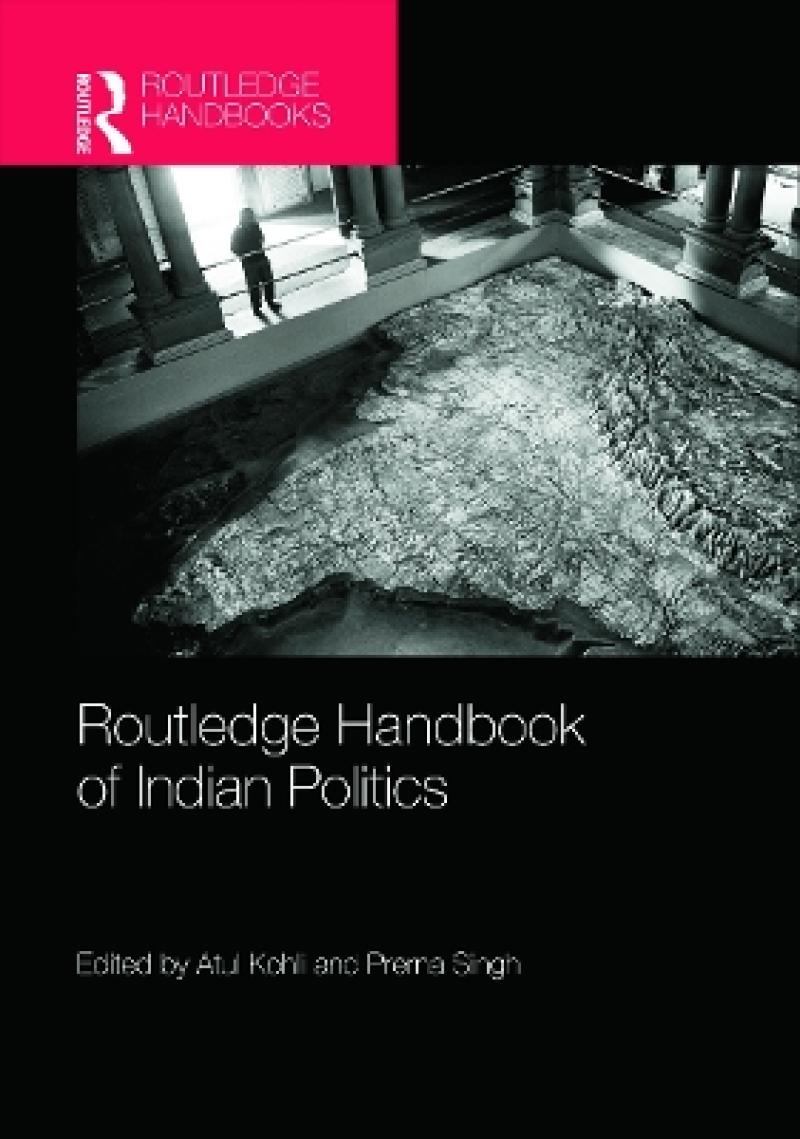<p>This coedited handbook navigates major themes of Indian history to explain Indian politics, political-economy, regional development, and India’s role in international relations. The analysis in part 1 covers the context of India’s colonization; key Indian leaders and their legacies; the dynamics of India’s political institutions centering on democracy, centralization-decentralization, ideologies of nationalism, secularism, and Hindu fundamentalism; and the "politics of empowerment" within India’s lower caste system. In part 2 contributors address India’s political economy, namely, its shift from a "reluctant" to an "enthusiastic" pro-capitalist state, and assert that this shift (evidenced in a "state-capital alliance" and the growing power of business groups) leaves much to be done in the areas of poverty removal, land redistribution, primary education, and public health. Part 3 addresses the diversity of India’s regional development involving roles of some "neo-patrimonial" governments and "authority structures" in this process. Part 4 analyzes India’s role in the regional and world arena (including international migration and its consequences for India) through the lens of India’s colonial past, nationalist, and world visions—which are also being shaped by ideational and structural factors of strategic interdependence. In pointing to new directions of thinking and research in these contexts, the handbook shows how power distribution in the society is constantly being negotiated and renegotiated.</p><p>--R. Das, University of Minnesota-Duluth </p><p>Summing Up: Highly recommended. Upper-division undergraduates through faculty.</p>
India’s growing economic and socio-political importance on the global stage has triggered an increased interest in the country. This Handbook is a reference guide, which surveys the current state of Indian politics and provides a basic understanding of the ways in which the world’s largest democracy functions.
The Handbook is structured around four main topics: political change, political economy, the diversity of regional development, and the changing role of India in the world. Chapters examine how and why democracy in India put down firm roots, but also why the quality of governance offered by India’s democracy continues to be low. The acceleration of economic growth since the mid-1980s is discussed, and the Handbook goes on to look at the political and economic changes in selected states, and how progress across Indian states continues to be uneven. It concludes by touching on the issue of India’s international relations, both in South Asia and the wider world.
The Handbook offers an invigorating initiation into the seemingly daunting and complex terrain of Indian politics. It is an invaluable resource for academics, researchers, policy analysts, graduate and undergraduate students studying Indian politics.
India’s growing economic and socio-political importance on the global stage has triggered an increased interest in the country. This Handbook is a reference guide, which surveys the current state of Indian politics and provides a basic understanding of the ways in which the world’s largest democracy functions.
1. Introduction: Politics in India Part 1: Political Change 2. The Historical Inheritance of India’s Democracy 3. Gandhi’s India, the World’s Gandhi; Gandhi at Home and in the World 4. Nehru and his Legacy 5. India’s Minority Leaders 6. Panchayati Raj Institutions 7. The Changing Fortunes of the Bharatiya Janata Party 8. Regional and Caste Parties 9. Caste and Political Parties in India: Do Indians vote their Caste – while Casting their vote? 10. Dalit Politics: Untouchability, Identity and Assertion 11. Class Politics in India: Euphemization, Voting, and Power 12. Reservations 13. The State and Civil Society in Communal Violence: Sparks and Fires 14. Insurgencies in India 15. People’s Movements in India Part 2: Political Economy 16. India’s Economic Development 17. The State and the Capitalist Class in India 18. Politics and Redistribution in India 19. Corruption in India 20. Public Goods Provision and Social Development in India 21. Labor Regulation, Trade Unions and Unemployment Part 3: Diversity of Regional Developments 22. Uttar Pradesh: New Patterns of Mobilization in the 1990s and Beyond 23. Kerala in Comparative Perspective: Movements, Politics and Democracy 24. Tamil Nadu Adam 25. West Bengal 26. Bihar Part 4: India and the World 27. India and the World: The Vicissitudes of Mutual Adjustment 28. India in Asia: Geostrategic and Economic Considerations 29. The Indo-Pakistani Conflict 30. India and Nuclear Weapons 31. India's Evolving Security Strategy 32. International Migration and its Consequences for India
Produktdetaljer
Biografisk notat
Atul Kohli is David Bruce Professor of Politics and International Affairs at Princeton University, USA. His principal research interests are in the areas of comparative political economy with a focus on the developing countries.
Prerna Singh is Assistant Professor in the Department of Government at Harvard University, USA. Her research interests are in the area of comparative politics, development, identity politics and South and East Asia.
